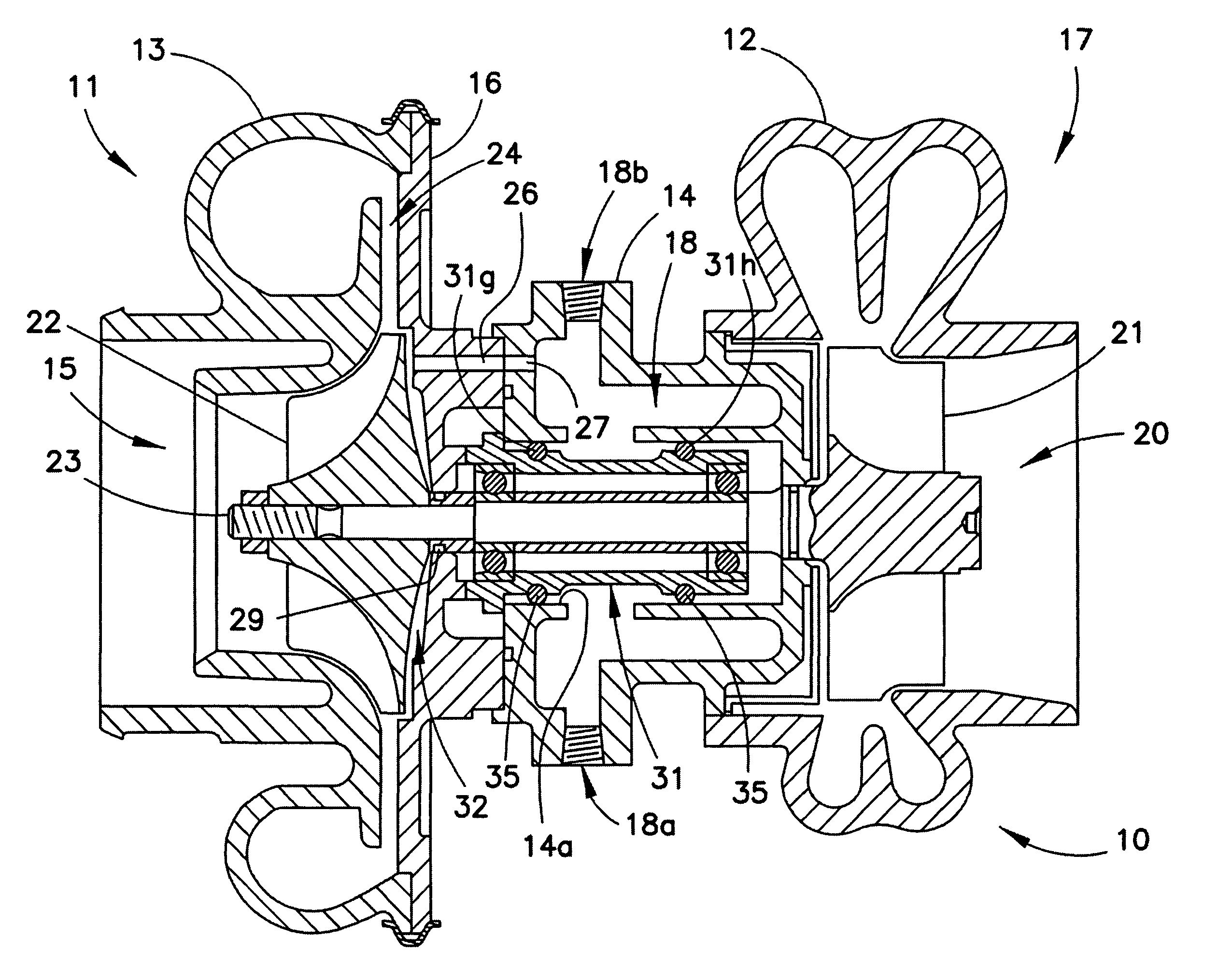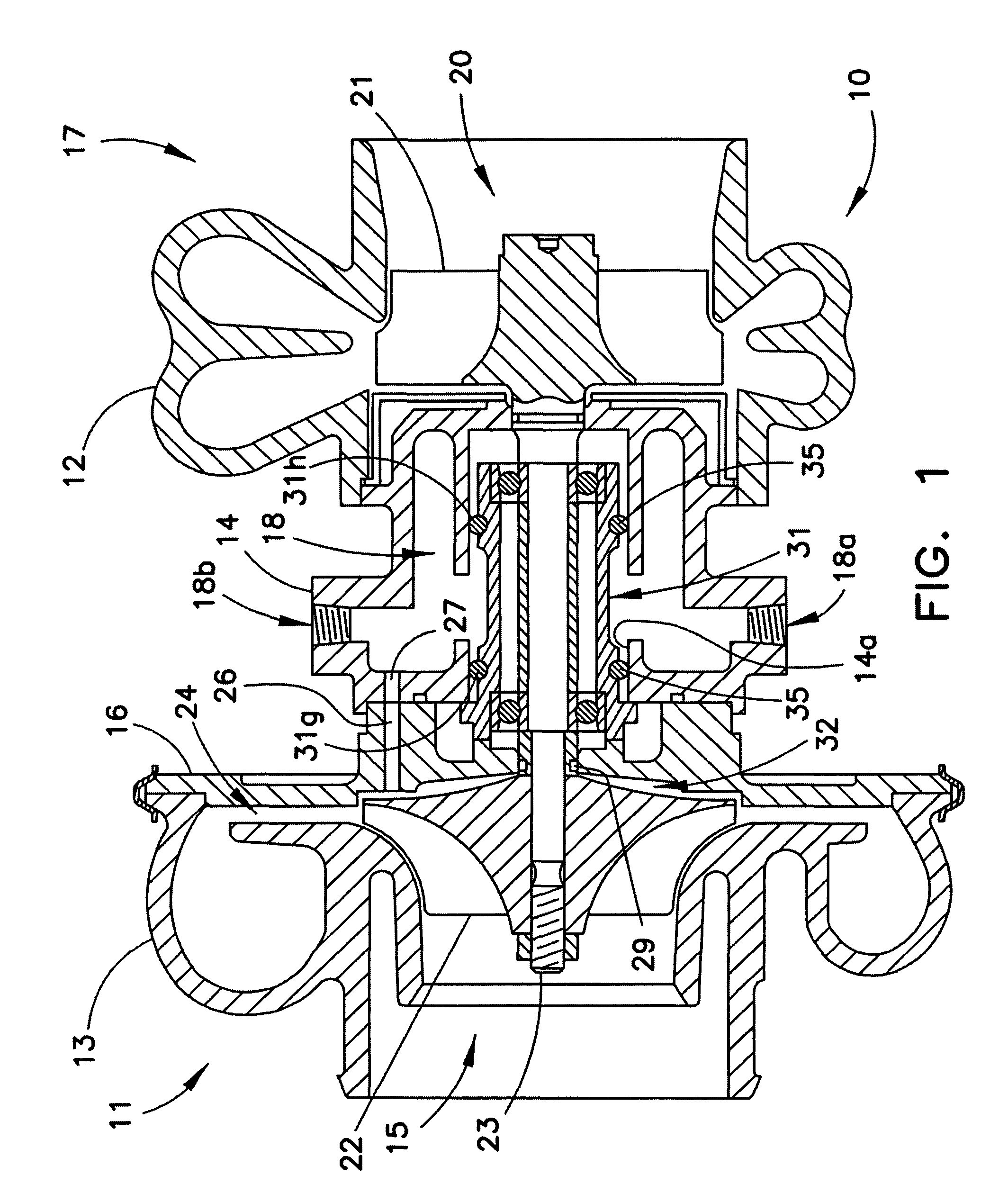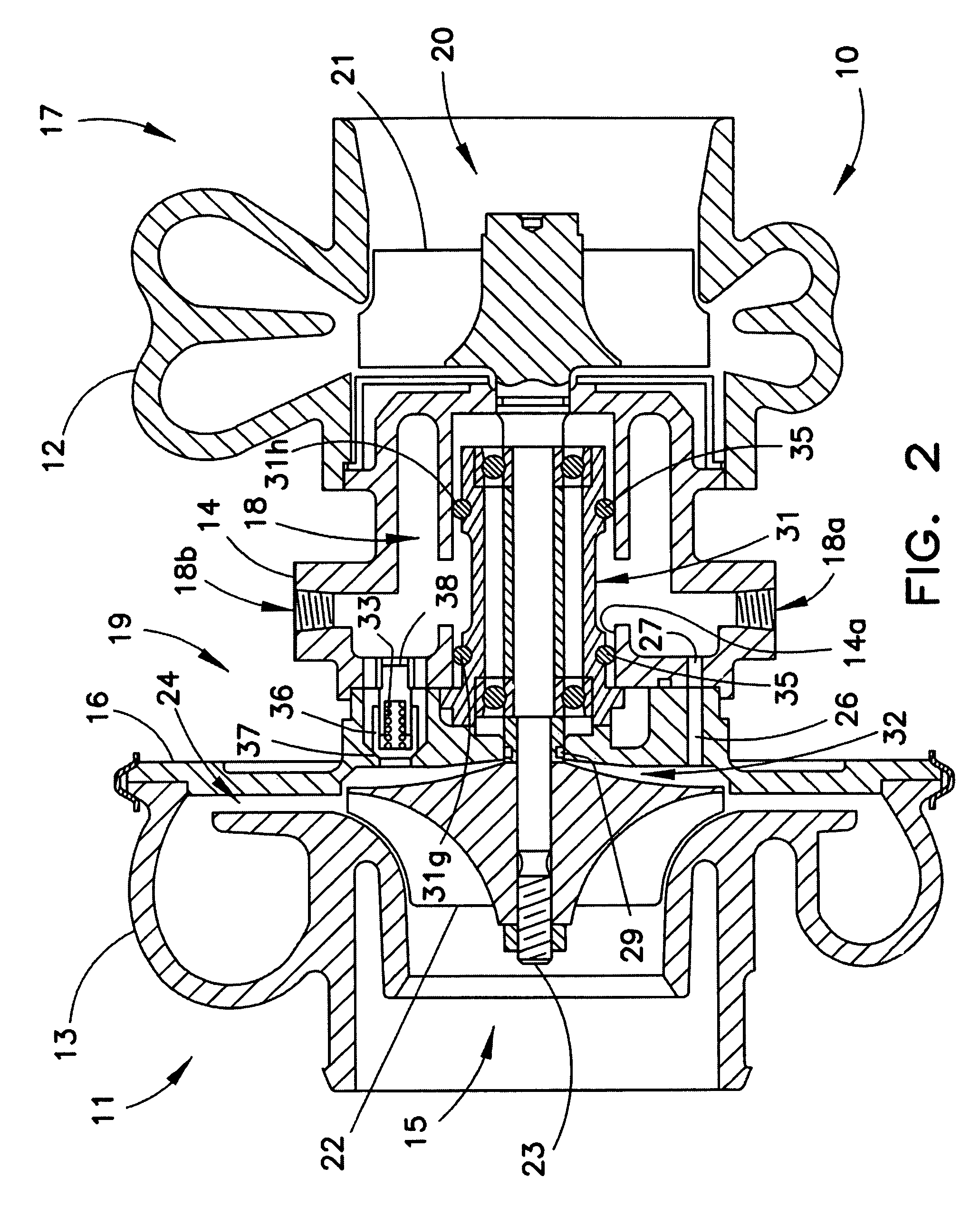Air-cooled turbocharger with optional internal pressure relief valve
a turbocharger and internal pressure relief technology, which is applied in the field of turbochargers, can solve the problems of complex location and installation of the turbocharger, significant cost addition to the basic turbocharger, and significant total friction loss of the complete bearing system, so as to increase the air-cooling effect and prevent the excess energy in the exhaust gas from over-speeding the turbocharger. , the effect of increasing the flow
- Summary
- Abstract
- Description
- Claims
- Application Information
AI Technical Summary
Benefits of technology
Problems solved by technology
Method used
Image
Examples
Embodiment Construction
[0023]As noted above, the invention provides an air-cooled turbocharger, which may, in a preferred embodiment be self-cooled. FIG. 1 illustrates a self-cooled embodiment of the invention where a flow of compressed air from compressor 11 is provided through a compressed air conduit 26,27 to a cooling jacket 18 of the turbocharger bearing housing 14. FIG. 2 also illustrates a self-cooled embodiment of the invention which includes, in addition to a compressed air conduit 26, 27, a pressure relief valve 19, which can open at a predetermined pressure within compressor 11 to initiate a larger flow of compressed air into the bearing housing cooling jacket. As illustrated in FIGS. 1 and 2 the self-cooled turbocharger of the invention includes an exhaust-driven turbine 17 for driving a rotatable shaft 23, a compressor wheel 22 driven by the rotatable shaft 23 for generating a flow of compressed air for delivery from the compressor casing 13 to the cylinders of an internal combustion engine (...
PUM
 Login to View More
Login to View More Abstract
Description
Claims
Application Information
 Login to View More
Login to View More - R&D
- Intellectual Property
- Life Sciences
- Materials
- Tech Scout
- Unparalleled Data Quality
- Higher Quality Content
- 60% Fewer Hallucinations
Browse by: Latest US Patents, China's latest patents, Technical Efficacy Thesaurus, Application Domain, Technology Topic, Popular Technical Reports.
© 2025 PatSnap. All rights reserved.Legal|Privacy policy|Modern Slavery Act Transparency Statement|Sitemap|About US| Contact US: help@patsnap.com



